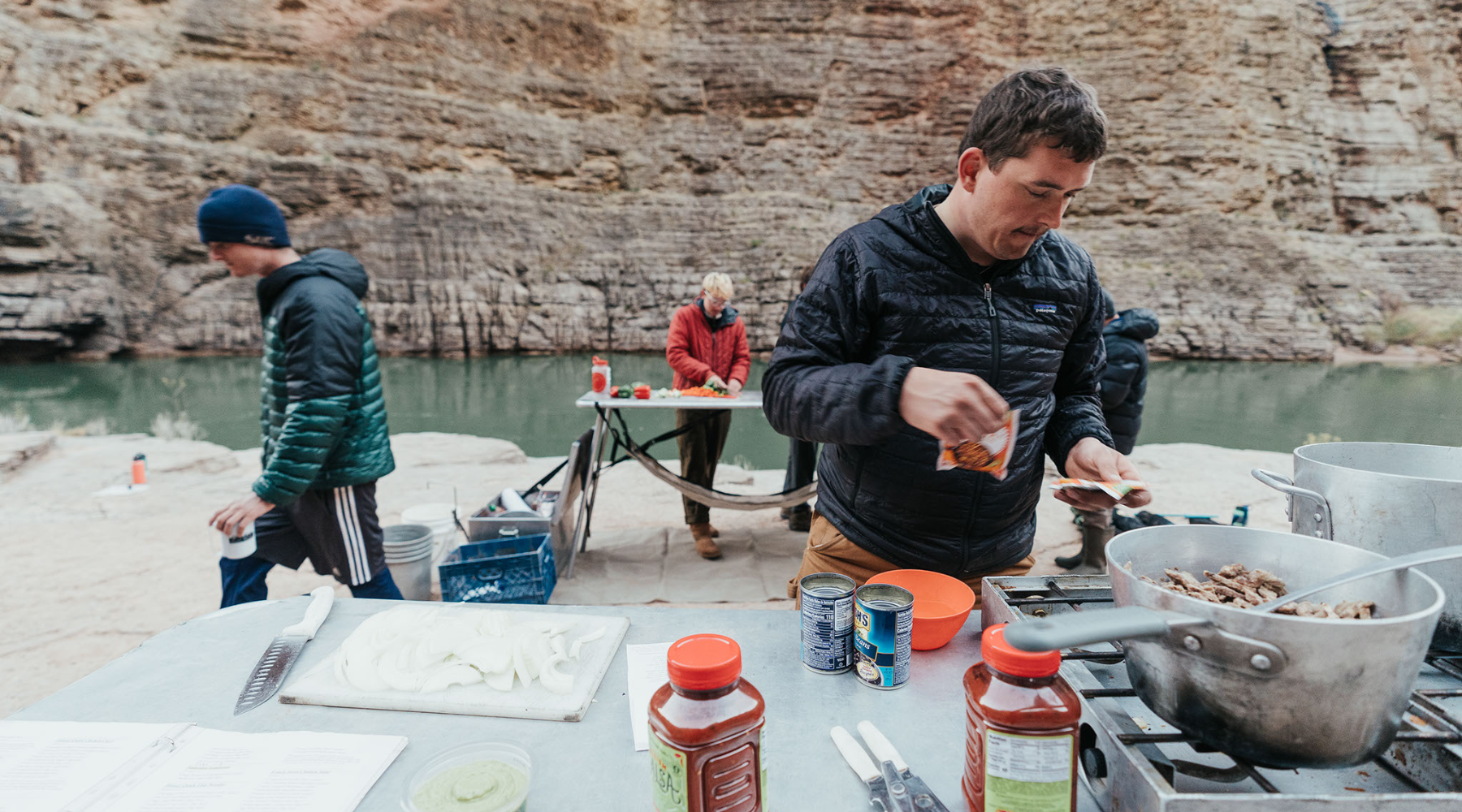There's no better meal than the one eaten by the side of a river. In this blog, we'll review 5 major tips for outfitting, managing, and cleaning up your river kitchen

Tip #1: Invest in the Right Equipment
There are a lot of options out there for river kitchen equipment.
Spending over $400 on a folding table can seem like madness, until you realize that table is built to function as a seat on your raft for passengers. If your boat happens to flip, the table will likely survive with little or no damage.
Buying a four burner stove that seems like it could survive a shotgun blast at point blank seems overkill until you think about the fact that potentially 25 people are depending on it to work with no backup option for days on end.
You get the picture - you get what you pay for. This is stuff that you acquire over time.

So what constitutes as the best equipment?
- Down River Equipment makes the best tables and table gear
- polytop
- aluminum top
- shoebox
- Down River Equipment makes the best Kitchen Box, which is a Drybox with legs and dividers
- Down River Equipment makes the best Hand Wash Station, a necessary requirement for any kitchen
- Woodland makes the best Power Blaster Stove because it folds up easily!
- NRS makes the best river wing for covering your cook crew from the elements
- Sea to Summit makes the best collapsible cookware which is great for smaller or self-support trips
Tip #2: Buy a Vacuum Sealer and Learn How to Use it.
At camp, the ideal scenario is that you are reheating meals instead of cooking them from scratch. Completing all your meal prep at home and putting items in vacuum-sealed bags and freezing them ahead of the trip allows for:
- Meals to stay fresh
- Your ice and cooler will stay cold
- Easy meal prep - just dump out or boil in the bag to reheat
- Little risk of weather impacting meal creation at camp
Low mess, little cleanup, and very little to pack out from a waste standpoint.
Pro Tip: Single-bag items like meats and double-bag items like sauces or stews so they can’t leak. There is no bigger bummer than watching dinner leak out of the bag into boiling water, rendering it useless for the most part while you figure out how to tell all your hungry friends you just messed up dinner bigtime...

Tip # 3: Understand Trash Management
Trash management is extremely important on river trips. This is something that newbies forget about until they are scratching their head trying to figure out where to pack a brimming 55 gallon trash bag so that its waterproof and rigged to flip.
Your best option for trash is to use “rocketbox” (20mm) ammo cans. These ammo cans can take a 30-gal kitchen-sized bag pretty well, and seal out water/stank when you close the lid.
Yeah, its unpleasant to deal with when you crack the seal to dump it out at the end of the trip but at least it’s not a groover!
Tip #4: Know Can Management
Along with trash, have a plan for cans. Lots and lots of cans.
Crushing cans as small as they go is the name of the game.
We like to utilize the sand stake mallet and a nearby rock to crush cans.
Crushing cans presents an issue, though. Even when done correctly, it creates sharp-edged metal that will poke through drybags and if you’re not careful, rafts or other inflatables.
Many boaters have what they call “the boneyard”. It's a small plastic bucket with a slit in the top big enough to fit a lightly crushed can. During the day, crush your cans the best you can and stick them in the boneyard.

At night, dump out the boneyard and take turns using rocks or a hammer to crush the living daylights out of any cans in there, then store the aluminum pucks in an ammo can for disposal at the end of the trip.
You’ll be surprised how small you can get cans and how many you can fit in an ammo can if you make it your mission to crush them efficiently. It’s kinda fun and satisfying, too.
Tip #5: Adjust to Outfitter Management
Grand Canyon trips and a few other of the longer section rivers often have an option to have the outfitter shop for you and plan your meals. This is a double-edged sword, because outfitters aren’t always efficient when packing. This can greatly impact the amount of space on your boat.

If you are using an outfitter, do yourself a huge favor and go through every single drybox, ammo can, and drop bag on every single boat on your rig-day, and remove ahead of time anything the group doesn’t think they’ll eat. Do what you can to consolidate items with non-collapsible packaging. Do what you can to eliminate glass at all costs.
Either leave it in your car, or give it back to the outfitter.

